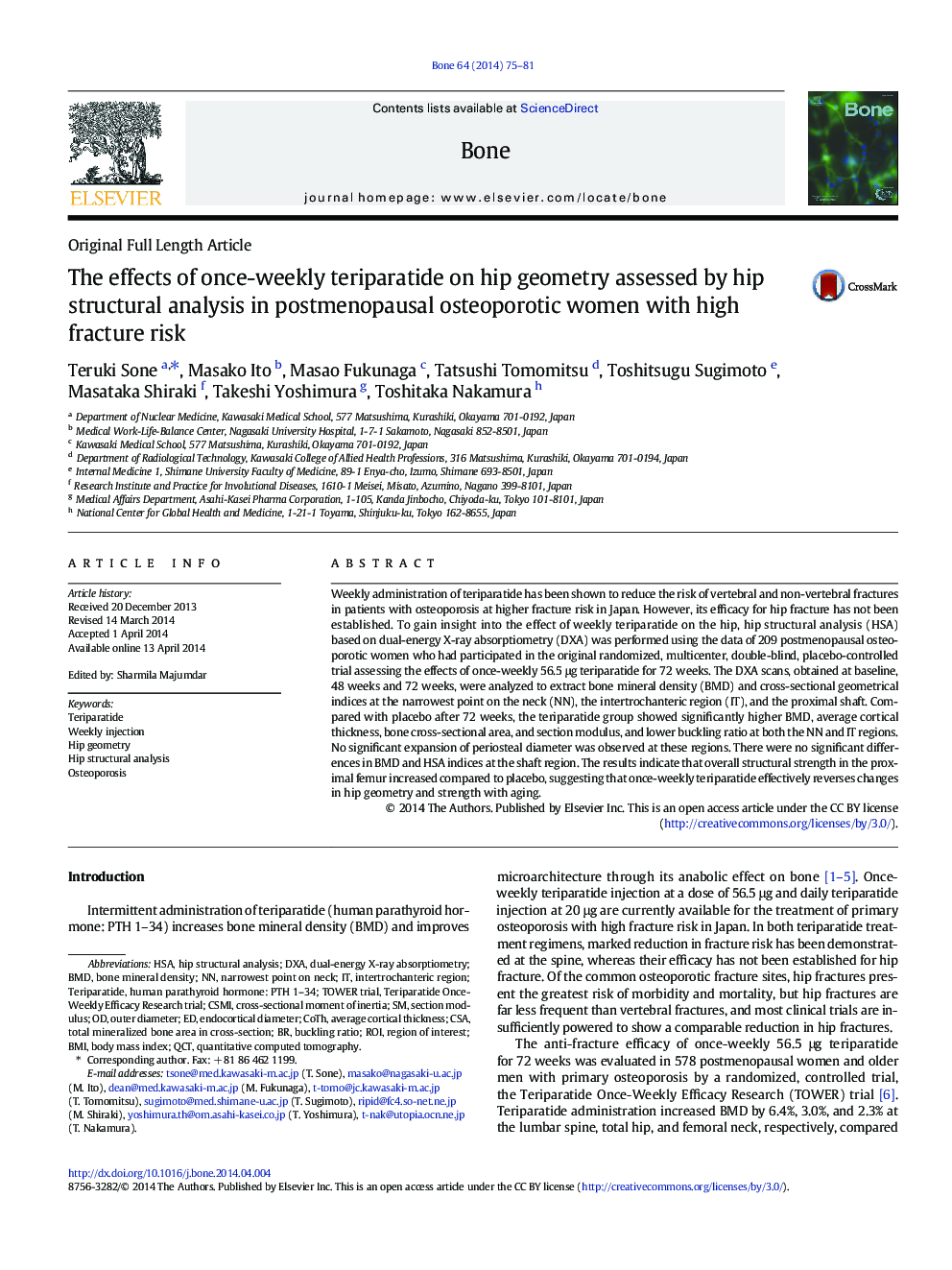| Article ID | Journal | Published Year | Pages | File Type |
|---|---|---|---|---|
| 5890051 | Bone | 2014 | 7 Pages |
Abstract
Weekly administration of teriparatide has been shown to reduce the risk of vertebral and non-vertebral fractures in patients with osteoporosis at higher fracture risk in Japan. However, its efficacy for hip fracture has not been established. To gain insight into the effect of weekly teriparatide on the hip, hip structural analysis (HSA) based on dual-energy X-ray absorptiometry (DXA) was performed using the data of 209 postmenopausal osteoporotic women who had participated in the original randomized, multicenter, double-blind, placebo-controlled trial assessing the effects of once-weekly 56.5 μg teriparatide for 72 weeks. The DXA scans, obtained at baseline, 48 weeks and 72 weeks, were analyzed to extract bone mineral density (BMD) and cross-sectional geometrical indices at the narrowest point on the neck (NN), the intertrochanteric region (IT), and the proximal shaft. Compared with placebo after 72 weeks, the teriparatide group showed significantly higher BMD, average cortical thickness, bone cross-sectional area, and section modulus, and lower buckling ratio at both the NN and IT regions. No significant expansion of periosteal diameter was observed at these regions. There were no significant differences in BMD and HSA indices at the shaft region. The results indicate that overall structural strength in the proximal femur increased compared to placebo, suggesting that once-weekly teriparatide effectively reverses changes in hip geometry and strength with aging.
Keywords
Related Topics
Life Sciences
Biochemistry, Genetics and Molecular Biology
Developmental Biology
Authors
Teruki Sone, Masako Ito, Masao Fukunaga, Tatsushi Tomomitsu, Toshitsugu Sugimoto, Masataka Shiraki, Takeshi Yoshimura, Toshitaka Nakamura,
